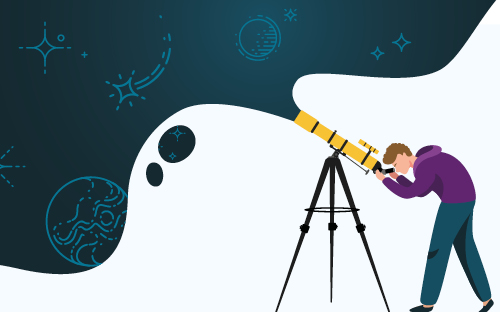Tell us a bit about yourself and what you do…
I’m a visually impaired astronomer and science communicator. I grew up in Australia, where it’s easy to get to somewhere with low light pollution and a stunning view of the dark night sky. Even though I couldn’t see very much of it (maybe a few bright stars, the Moon and some of the Milky Way), I found space really fascinating. By about the age of five I’d decided that I wanted to be an astronomer when I grew up. My research background is galaxy evolution, or studying how galaxies change and what can make them change. Since moving to the UK, I made the shift into science communication and I’m currently leading on a public engagement project called the Tactile Universe, which is looking at ways to make the subject of astronomy accessible to other visually impaired people.

Galaxy evolution, is the study of how galaxies change and what can make them change.

Q: What does an average day look like for you?
A: The great thing about my job is that every day is completely different. Some days I get to 3D print and test new models and designs that we can use to make teaching astronomy easier, other days I visit other scientists, teachers and science communicators to help them learn how to teach science to visually impaired people. I also visit lots of schools to talk to students about the kinds of research that other astronomers I work with are doing.
Q: How does your work impact on the world around us?
A: I’d say that astronomy is probably one of the most visual sciences. Everything from how we teach it, to how we communicate it to the public, and how we do our research is just really visual. This can make it quite hard for people with a visual impairment to access the subject. By putting in the time (and using our expertise) to develop really good teaching tools that work without a visual component, we’re able to open up this fascinating topic to people who otherwise wouldn’t be able to access it easily.
Every day is completely different. Some days I get to 3D print and test new models and designs that we can use to make teaching astronomy easier.

Q: What inspired your work on Tactile Universe?
A: Learning about space with a visual impairment isn’t always easy, because the subject can be so visually focused. When I was growing up, I had lots of support from my parents and teachers. Nobody ever said I shouldn’t, or couldn’t be an astronomer because of my eye condition, but there was a real lack of good resources that might have helped. Things have gotten a little better since I was a kid, but there’s still lots that can be done. As teachers for the visually impaired are so few and far between (and extremely busy as a result), they don’t always have the time or expertise to make these kinds of resources themselves. We figure that we’re pretty well placed to help out with this.
Q: What’s the highlight of your career?
A: Getting my PhD was a big thing for me. It was my second try (I’d quit my first PhD attempt after 2.5 years due to struggling with severe depression and anxiety, and being too stubborn to ask for help). I actually thought I’d never come back to astronomy after that, but I did, and here I am now.
Q: What’s next for you and Tactile Universe?
A: Right now we’re in the process of forming a national network of people from across the UK who we’ve trained to use our resources to teach visually impaired students in their parts of the country. We really want everybody to stay in touch, let one another know what they’re trying that’s working, and what isn’t working as well. Beyond that, we’re looking at other areas of astronomy, and more generally physics that we can start to develop accessible resources for. Things like light, for example, can be really hard to teach, so if we can come up with models and particular descriptions of concepts that can help, we’ll do that.
Q: What advice would you give to someone wanting to get into this as a career?
A: There are lots of ways you can get into astronomy nowadays. The traditional way is to do maths and physics, but I also know chemists, computer programmers, engineers and even psychologists and biologists who’ve gotten jobs in the field. In terms of science communication, I think it’s important to be enthusiastic, know how to pitch ideas to your particular audience, and be able to explain things in ways that people will ‘really’ understand. The good news is that you don’t have to be an extrovert to do this type of work either. Me and lots of my colleagues in outreach and public engagement are actually massive introverts. We put on our ‘public face’, do our job (and really love it!), then we have to run away and hide somewhere for a while to calm down.
Q: Are there any projects our readers can get involved in?
A: There are lots of other great projects that deal with inclusive resources, but I’ve just chosen two examples. In Manchester, there is a group called the Tactile Collider who are developing resources for visually impaired people based around particle physics. On an international scale, the International Astronomical Union (IAU) is currently running a travelling exhibition called ‘Inspiring Stars’ which aims to highlight inclusive astronomy projects from all over the world. The project is also looking for groups to organise their own inclusive astronomy activities in their home cities.


